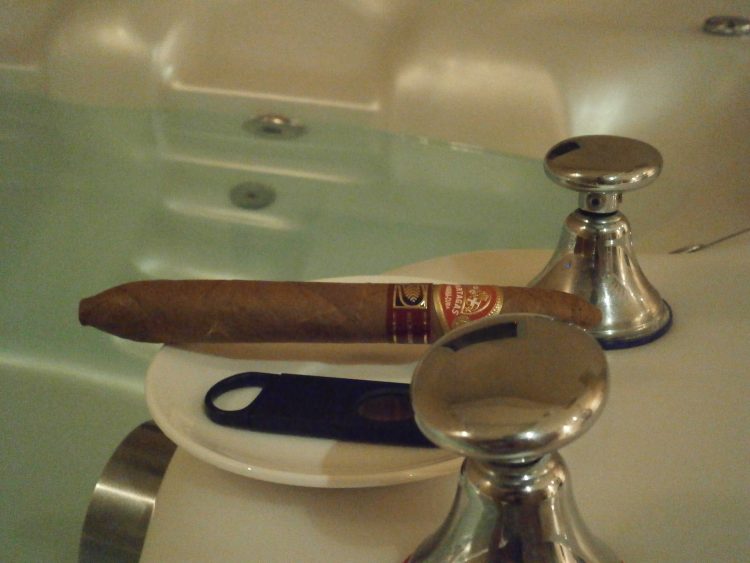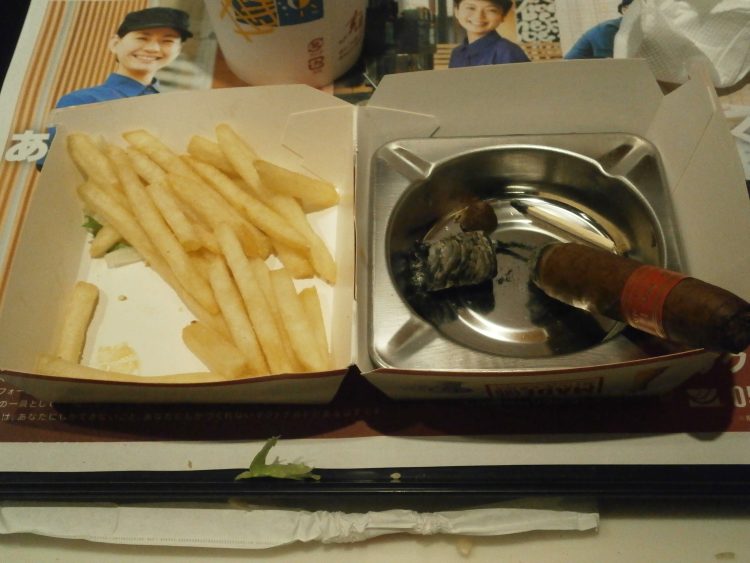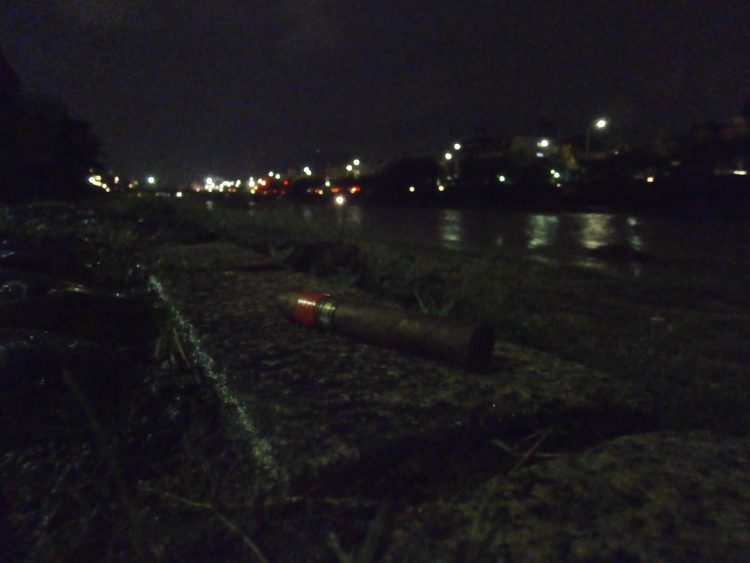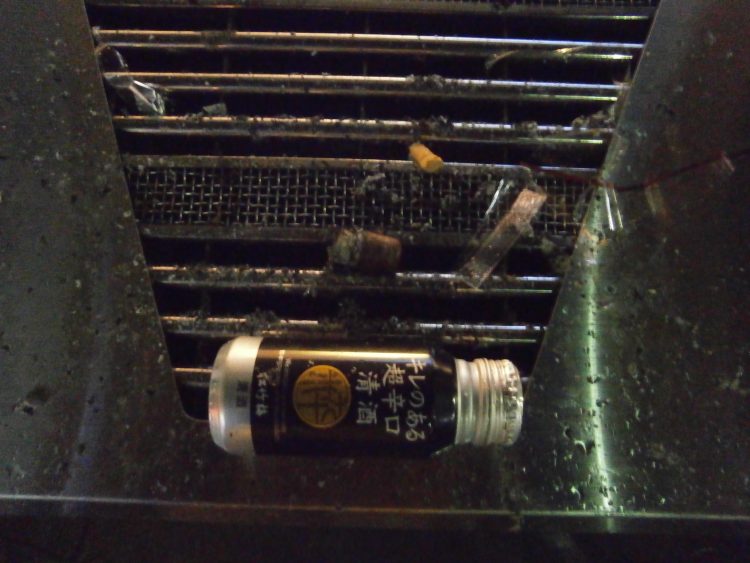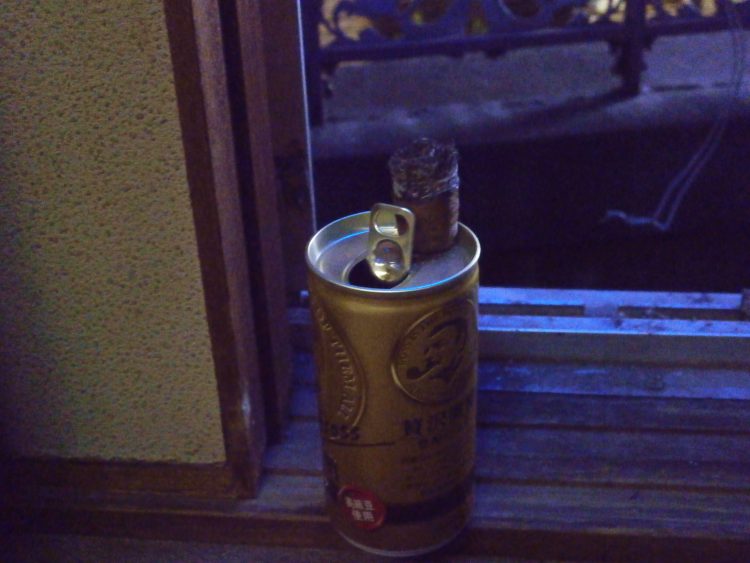A hot-tub in Taipei, Taiwan. Lance Hendricks, a friend blessed with the intelligence to dream of an exceptional life for himself, but crippled, both metaphorically (by a pathological fear of an honest day’s work) and literally (by a genetic pre-disposition to hip injury), has dropped out of society and washed up here. My own life in China was always that of the Western imperialist; earning an Australian salary that was a factor of ten greater than that of my equally ranked local colleagues, I lived the high life: the best clubs, the best drugs, the prettiest girls – all of them were the exclusive domain of me and my deviant expatriate friends. My man in Taiwan is the first white person I have known to live the life of a typical Chinese native, not in the glamorous heart of Taipei where glass sheathed towers flank wide boulevards and girls with short skirts and debatably genuine Prada handbags dance with the wàiguórén and sip Johnny Walker Blue Label mixed with sweet green tea, but in Tucheng, a rat’s nest of blind alleys and rabid dogs two stations from the end of the line. Being a cripple, his one requirement of my visit was that I find a hotel not too far from his burrow and the only place I could book online was a suites only motel near the freeway, the kind of place frequented by the discreet elite: those with the money and the inclination to take their girlfriends somewhere they won’t be recognised. Let me put it this way: the main drive is decorated by a forty meter frieze of nude sirens bathing. I am fairly sure my visit marks three milestones for this establishment: the first foreign visitor, the first solo guest, and the first person to stay more than one consecutive night. The room is as luxurious as any I have encountered in my travels. The floor space runs about 90m², of which the bathroom constitutes at least 40m², containing a fountain, a wet massage bed, a six headed shower, the usual sink and toilet along with a spa bath that could comfortably accommodate eight. It is in this bath that I find myself tonight. It is next to this bath that my Partagás Salomones finds itself tonight.
I dip the cigar in the clean bathwater before I respectively light and enter it. It doesn’t seem to do it any harm. At first the draw is a bit tight, as is typical of perfectos, but within ten or so minutes it opens up. The flavour is a mild, milky earth and light tobacco. Delicious. Dear Reader, I would like to submit that from the inside of a spa bath is the ideal condition to enjoy a cigar. With good friends and strong drink is undoubtedly delightful, but one tends to lose focus on the intricacies of flavour in that situation. A spa, however, is fun in and of itself, and it’s relaxing, focusing the mind and the senses. An added advantage is that the heat will hopefully leech from my body whatever toxins the tobacco might deposit. I’m pairing this cigar with a Gold Medal Taiwan Beer, which I bought because I was in Taiwan, and it seemed sensible to drink the national beverage. I can’t imagine on what criteria this alleged gold medal was awarded, as Gold Medal Taiwan Beer is as tasteless a brew as I have ever encountered, being essentially mineral water with a hint of malt extract. It does the job, nonetheless.
Lance was once a promising boy with a bright future, raised by a good family in a pleasant middle class area, he attended one of Melbourne’s best public schools. In his late teens he met a nice girl, Natalie, and after a few years of tertiary education he got a decent office job in a technical field. He and Nat moved into a comfortable suburban home together, they purchased cats, and to all eyes their future was laid out: a few kids, a lengthy mortgage, and the occasional international holiday, followed by the comfortable twilight of the working middle class.
His decline started, as near as I can pinpoint it, about five years ago. I hadn’t seen him in a month or so when we ran into each other at a mutual friend’s art exhibition, and so, catching up, I asked how Natalie was. “Oh, she’s gone” was the response, surprisingly flippant for the announcement of the end of a seven year relationship. “I’ve got a new girl now. She’s over there.” The girl he pointed to was an unerringly beautiful seventeen year-old, doll faced Russian brunette wearing a short red cape. He leaned in and whispered “her name’s Natasha. She cost me twenty-five thousand dollars.” I’ve never been sure if he was joking.
From then on announcements came thick and fast. A few weeks later he got a new job. A month after that he bought a flat and one of the cats died. The next month he’d quit the new job and was collecting the unemployment benefit. When I first visited him in his new home where there wasn’t a lot of conventional furniture, just broken guitars he’d found at a hard rubbish collection. For reasons not entirely clear to me he’d demolished most of the bathroom, leaving exposed pipes and concrete. We smoked weed out of a bong he’d made from a large juice bottle and some rubber tube. He was very proud of it. We watched metal videos and he played the solos from Megadeath songs for me.
About halfway through the Salomones a lump of ash falls into the water, where the jets instantly pulverize it. The flavour is very balanced, mid-tobacco with a sweaty, earthy note and slight peppery aftertaste, like a very light chemical capsaicin. It’s something akin the smell of freshly maced protesters.
Natasha lasted a year or so, and when she was gone he sold the flat (for a reasonable profit – he had someone come and finish the bathroom) and moved to Thailand to live in a kickboxing training camp. He returned to Australia three months later, lean and strong, with long hair and a beard. He moved back into the pleasant, middle class house in which he was raised and got a job driving a truck. It wasn’t a lot of work, a few hours a day at best, which left him with a lot of hours to get in his mother’s hair. He needed a retreat, and so strung up a heavy bag in the garden shed and would spend hours every day kicking it.
His family had always had weak hips. His father, only in his sixties, had had both replaced, as had his uncle and their father before them, but when Lance’s hip started to hurt him he was unconcerned. “It’s just the muscle growing” he told me. “Strength builds when the fibres in the muscle tear, and then grow back stronger. If I want to be strong I have to fight through the pain, keep kicking this bag.” After a month or so his body rebelled. He could no longer lift his leg high enough to kick the bag.
Even at his most lucid Lance always had a furtiveness about him, a hint of madness in his eyes that was considerably exacerbated by his permanently dilated pupils, a symptom of the weed with which he increasingly self-medicated his injury. In agonising pain and barely able to walk, with long hair, a beard, and dressed in ill-fitting athletic clothes from K-Mart, he went into a doctor’s office and was treated with suspicion; “It’s all psychological” they told him, refusing to prescribe anything stronger than Ibuprofen. “Go home and get some rest.” He tried a few different doctors with similar results, and grew increasingly frustrated by what he perceived as the uncaring system. Then one day he announced that he’d met a Japanese girl on the internet and was going to live in the suburbs of Tokyo with her for six months to convalesce.
Into the final quarter, and the cigar remains largely unchanged. A slight creamy dairy note has emerged. Even more static is the flavour of the Taiwan beer, which remains as bland as ever.
Lance returned to Australia with his condition considerably worsened, now unable to walk without the aid of a cane and reluctant to drive. His once muscular physique was gone, and although he had no appetite, he was growing fat from inactivity. Most of his old friends had abandoned him, and he had acquired a new set, all much younger than him, but sharing the same circumstance: they were unemployed drug addicts living with their parents. Lance and I had always liked to go out for Indian food together, but now he was reluctant. He couldn’t eat without first stopping to smoke a jazz cigarette in a laneway, something I was loath to let him do. We fought over it, and drifted apart for a while.
When we reconciled he had found a new girlfriend, a twenty year old Taiwanese international student named Storm. A semi-professional basketball player in her native land, in Melbourne she played power forward for a bush league Tuesday night game, and Lance and I would go watch her play sometimes. I never saw her lose. She moved in with him, sharing his childhood bedroom. Once a Spartan cell, he covered the walls with egg cartons and miscellaneous fabric in order to make a better studio for recording self-composed rap songs to put on Youtube. Within six months Storm’s visa ran out, and within seven he had moved to Taiwan to be with her.
And so I find myself in a spa bath in Tucheng. Two days ago I met my friend by the fountain in front of the Taipei Main Railway Station. His eyes have turned milky, and he’s put on a lot of weight (he lives mainly on fried chicken and Red Horse beer – his preference due to its 8% alcohol content). I haven’t spoken Chinese in three years, and even then my vocabulary never went beyond thirty words, and yet, whenever Lance and I are in a store or restaurant and someone speaks to us in Chinese he looks to me to translate. I think he finds the language offensive and refuses to learn it on general principal.
Earlier today I visited him at his home. He showed me the supermarket where he buys his groceries. We bought some beer and drank it in a park. On his recommendation I bought a bag of beetle nut. It’s disgusting, but it makes you feel pretty jazzed. A little toasted we wandered into a junk shop and purchased an arsenal of air rifles (banned in Australia), and tried firing them out the window of his apartment. The little yellow pellets were too hard to see, so we came back to my giant bathroom and blazed into the fountain and the marble walls, the pellets shattering and sending tiny plastic shrapnel everywhere. By dinner time he was tired from the walking and returned home, leaving me with an evening to myself and Partagás Salomones.
What will become of my friend I cannot say; like all fugue states, his must eventually reach some kind of conclusion: perhaps death, perhaps epiphany. I look forward to finding out.
In the last moments the Salomones becomes harsh, but not without due cause. This was not a small cigar. The final notes are bitter tar and earth wood smoke. An excellent cigar, considerably better than a PSD4.
